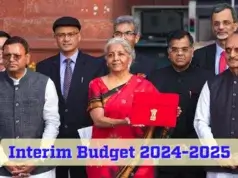 The National Highways Authority of India’s proposal to replace manual toll collection at highway toll plazas with electronic toll collection (ETC) will result in an estimated combined annual saving of around 22 billion due to plugging of toll leakages and savings on fuel. The government has announced that the system will be in place at all highway toll plazas by March 31, 2014.
The National Highways Authority of India’s proposal to replace manual toll collection at highway toll plazas with electronic toll collection (ETC) will result in an estimated combined annual saving of around 22 billion due to plugging of toll leakages and savings on fuel. The government has announced that the system will be in place at all highway toll plazas by March 31, 2014.
In India, toll revenues from highway stretches have played an important role in encouraging private participation in the roads sector. The introduction of tolled stretches and the increasing prevalence of annuity and BOT-based models for private participation have led to a substantial rise in the number of tolled roads. As of 2011-12, CRISIL Research estimates that around 8,600 km of highways in India are tolled (around 4,300 km of national highways and around 4,300 km of state highways).
In future too, with private participation expected to go up, there will be a considerable increase in the incidence of tolled stretches, the efficacy of which will be the cornerstone of future highway infrastructure development. Under the circumstances, a well-maintained toll collection system will play an extremely crucial role by closing loopholes in toll collection.
Toll leakages occur when a vehicle does not pay the requisite toll or when booth operators under-report collections. Based on the current industry estimate of about 10 per cent leakage, annual losses for road developers are estimated to be approximately 12 billion. An automated tolling system can effectively address this area of grave concern for road developers and lenders with exposure to road projects.
Toll leakages directly affect the base traffic estimate, which is one of the key assumptions made by developers when they bid for a particular stretch. Toll leakages reduce the estimated base traffic number as toll is not collected from all vehicles that are actually part of the traffic. CRISIL Research believes that even a marginal change in base traffic estimates has a profound effect on project returns. Though setting up an ETC plaza (based on RFID-passive technology) entails marginally higher expenditure as compared to a manual toll collection plaza, the operating costs are significantly lower.
The savings in operating costs, coupled with the potential revenue upside from reduced toll leakages, will lead to an increase in the IRR of the project. We reckon that a 10 per cent reduction in base traffic estimate for a particular stretch can reduce project returns by as much as 200-250 basis points.
Another equally important benefit will be in the form of savings on fuel worth around Rs. 10 billion per year due to the elimination/reduction in the waiting time of vehicles. The savings in fuel will far outweigh the initial cost of 100 per vehicle that the system requires from vehicle owners.
According to latest estimates, there are close to 525 toll plazas, operating on national and state highways in the country. On an average, over 20,000 vehicles cross each of these toll plazas daily, each queuing up for approximately 5-10 minutes awaiting their turn to pay the toll fare. Each vehicle consumes almost 0.5-1.0 litre of fuel in an hour. Collectively, these vehicles spend around 1,800-3,600 hours at toll plazas, which results in a daily wastage of Rs. 30-60 million, translating annually into 10 billion.
The ETC system, a nationwide automated collection system, is a tried and tested technology that has been successfully implemented in many countries and resulted in increased toll revenues. Based on radio frequency identification (RFID), it comprises a wireless on-board unit (OBU) fitted into a vehicle and a stationary roadside unit (RSU) placed at the toll plaza.
There are many technologies available globally that provide higher bandwidth and range but we believe that RFID-passive systems are powerful enough to handle the volume and speed of traffic seen on Indian roadways. Moreover, the extremely low cost of the on-board unit (which will be borne by the final consumers) is a major advantage in a developing country such as India.
However, for the system to be truly effective, a single on-board unit should function at all toll plazas across the country. This is crucial because if ETC implementation takes place only at individual stretches, the OBUs will correspond only to those specific roads. As a result, a vehicle travelling across different stretches would require several OBUs, which is not feasible.
The system will require the government to invest in two major system components to enable collections to flow to toll operators – a central database where the clearing-house will store account information, and networks that will connect toll plazas to the database. Revenues from tolled stretches will flow directly to the involved operators via the central clearing-house.
The ETC system is likely to come up in a phased manner, with pilot projects on dense highway stretches. When fully and effectively implemented, it holds the promise of revolutionising the road travel experience in the country and bringing it on par with that in other developed nations.











